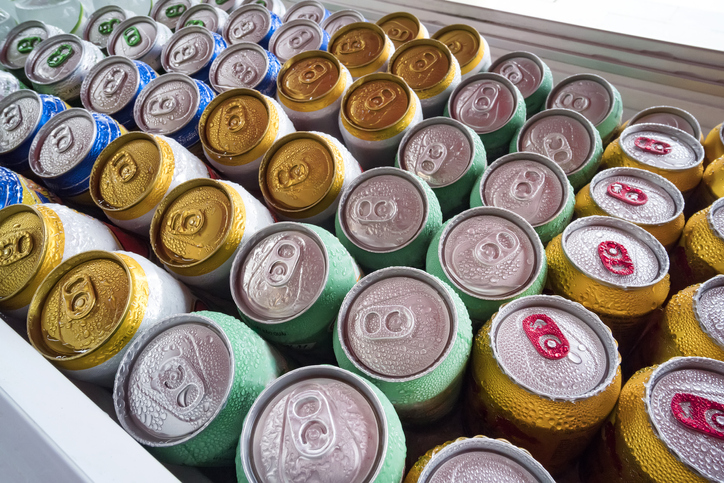Hard Seltzer Labels: Breaking Down Potential Labeling Regulations
Hard seltzers are an increasingly popular beverage for people across North America, but there are some potential problems when it comes to packaging these products. Namely, some hard seltzers fall under different regulatory guidelines than others. Let’s break down exactly why hard seltzers can follow different regulations and what those regulations are.

Does Hard Seltzer Follow TTB or FDA Label Regulations?
The key to identifying which labeling guidelines apply to your hard seltzer depends on how the product is made. While the Alcohol and Tobacco Tax and Trade Bureau (TTB) largely oversees labeling requirements for alcoholic beverages, there are some exceptions that fall within FDA jurisdiction: wines that contain less than seven percent alcohol by volume and beers that aren’t made from malted barley and hops.
What that means for hard seltzer labels is that the base of the beverages will dictate what specific regulations are followed. According to the TTB, hard seltzers made with either malt or sugar bases are considered “beer” products. This means that hard seltzers must follow federal beer laws and should display the following:
- The name or trade name of the brewer
- The net contents of the bottle
- The nature of the product (ex. “beer” or “hard seltzer”)
- The place of production
- A health warning statement
However, those are not the only labeling requirements for hard seltzers. Malt-based hard seltzers are defined as “malt beverages.” As such, all hard seltzers must follow federal beer rules and additional TTB labeling laws. Meanwhile, sugar-based hard seltzers must instead follow certain FDA labeling rules.
The Differences Between TTB and FDA Regulations for Hard Seltzer Labels
In addition to the federal beer labeling rules, there are other rules that both malt and sugar-based hard seltzers must follow. Both types of hard seltzers must submit a Brewer’s Notice application with the TTB to qualify for production. Furthermore, the TTB must approve the product formula. However, there are some specific TTB and FDA regulations that apply to the different types of hard seltzers.
TTB label requirements for hard seltzers
There are several key elements that the TTB requires for any malt beverage label. Some of these elements are already required by federal beer laws, but the TTB adds on some additional items such as additional rules for class and type designations and disclosures for specific ingredients. The TTB also has specific rules for how each element should be displayed on malt beverage labels. For a detailed breakdown of these requirements, check out our post on TTB label requirements.
Another major difference for malt beverages is the need for a Certificate of Label Approval/Exemption (COLA). The TTB reviews every COLA whether it’s for a new product or if you make changes to your label. Malt-based hard seltzers will need the TTB to approve this COLA before you can sell your products.
FDA label requirements for hard seltzers
Typically, alcohol labels don’t have to disclose ingredients or nutritional information (although it is optional to do so). However, the FDA generally requires food and beverage products to include a nutrition facts panel and ingredients statement on labels. This mandate holds true for alcoholic products that happen to fall under FDA jurisdiction. As such, sugar-based hard seltzers must follow proper nutrition facts panel and ingredients statement protocol as found the FDA’s Food Labeling Guide.
Another big difference between the FDA and TTB is that the FDA doesn’t have a pre-market approval process. While this may sound like a more attractive scenario than submitting a COLA, no pre-approval can open hard seltzer labels up for potential penalties. The FDA will still review and pursue agency action if they discover any labeling issues, so you’ll need to make sure that your packaging is completely compliant before you go to market.
Don’t Skimp on Style for Your Hard Seltzer Labels
Whether your hard seltzers fall under TTB or FDA alcohol regulations, it’s important to make sure your packaging is compliant with existing standards. It’s also critical that your labels do all they can to impress potential customers.
When you need show-stopping hard seltzer labels, Blue Label Packaging can help. Our experts can help you bring your stunning designs to life, find cost-effective solutions that showcase the quality of your products. Contact us today to invest in the perfect labels for your hard seltzers.